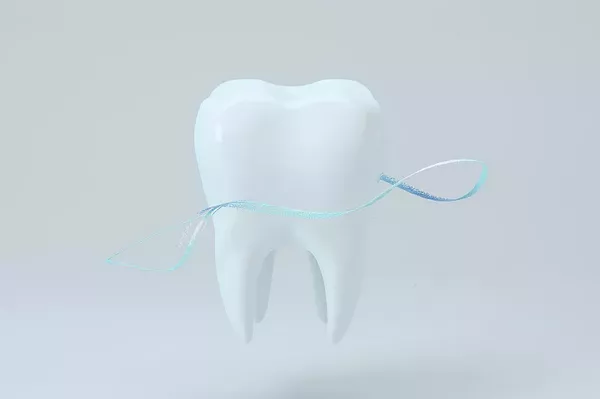A trip to the dentist often raises questions about the duration of dental procedures, especially when it comes to cavity fillings. Understanding how long cavity filling takes is essential for patients seeking both reassurance and a clearer grasp of what to expect during their dental visit. In this comprehensive guide, we will delve into the intricacies of cavity filling, shedding light on the factors influencing the duration and providing valuable insights for those curious about this common dental procedure.
The Basics of Cavity Filling
What is Cavity Filling?
Restoring Tooth Structure: Cavity filling, also known as dental restoration, is a dental procedure designed to restore a tooth damaged by decay. It involves removing the decayed portion of the tooth and filling the void with a dental material to prevent further damage.
Common Materials Used: Dental fillings can be made from various materials, including amalgam, composite resin, porcelain, and gold. The choice of material often depends on factors such as tooth location, cosmetic concerns, and budget considerations.
Indications for Cavity Filling
Tooth Decay: The primary indication for cavity filling is the presence of tooth decay. If left untreated, cavities can progress and lead to more significant dental issues, including infections and tooth loss.
Fractured or Damaged Teeth: Cavity filling is also employed to restore teeth that are cracked, chipped, or otherwise damaged due to trauma or wear.
Factors Influencing the Duration of Cavity Filling
Size and Complexity of the Cavity
Small Cavities: Minor cavities typically require a shorter filling time. These are often simpler to address and involve less tooth preparation.
Large Cavities or Multiple Cavities: Larger or multiple cavities may necessitate more extensive preparation and filling, contributing to a longer duration.
Type of Filling Material Used
Amalgam Fillings: Amalgam fillings, composed of metals like silver and mercury, tend to set quickly. The application process is relatively straightforward, reducing overall procedure time.
Composite Resin Fillings: Composite resin, while aesthetically appealing, may require additional time as it involves layering and curing with a special light for each layer.
Location of the Tooth
Accessibility: The location of the tooth within the mouth can impact the ease of access. Teeth in the back of the mouth may take longer due to their position and the challenges in reaching them.
Aesthetic Considerations: Front teeth, which are more visible when smiling, may require additional time for meticulous shaping and blending of the filling material to achieve a natural appearance.
Step-by-Step Breakdown of Cavity Filling Process
Diagnosis and Treatment Planning
X-rays and Examination: The dentist begins by assessing the extent of the decay through X-rays and a thorough examination. A treatment plan is then formulated based on the severity of the cavity.
Discussion with the Patient: The dentist discusses the treatment plan with the patient, explaining the cavity filling procedure and addressing any concerns or questions.
Administration of Anesthesia
Local Anesthetic: Before the procedure, the dentist administers a local anesthetic to numb the tooth and surrounding tissues. This ensures the patient’s comfort during the cavity filling process.
Tooth Preparation and Removal of Decay
Isolation and Cleaning: The dentist isolates the tooth using a rubber dam or other techniques to keep it dry. The decayed portion of the tooth is then removed using a dental drill or laser.
Shaping the Tooth: The dentist shapes the remaining tooth structure to create a space for the filling material. The goal is to prepare a stable foundation for the restoration.
Application of Filling Material
Layering Process: Depending on the type of filling material chosen, the dentist applies the material in layers. For composite resin, each layer is cured with a special light before adding the next.
Meticulous Placement: The dentist takes care to place the filling material precisely, ensuring proper contours and contact with adjacent teeth.
Final Adjustments and Polishing
Checking the Bite: The dentist checks the patient’s bite to ensure that the filling does not interfere with the natural occlusion of the teeth. Adjustments are made as needed.
Polishing the Filling: The filling is polished to achieve a smooth surface and a natural appearance. This step enhances both aesthetics and comfort.
Duration Range for Cavity Filling
Average Time Frame
Simple Cavities: On average, filling a single, uncomplicated cavity can take approximately 20 to 30 minutes.
Multiple or Complex Cavities: If multiple cavities need filling or if the cavities are complex, the procedure may extend to an hour or more.
Variables Affecting Duration
Patient Cooperation: The patient’s ability to remain still and cooperative during the procients may require more time.
Dentist’s Efficiency: The experience and efficiency of the dentist play a crucial role. Experienced dentists may complete procedures more quickly while maintaining high-quality work.
Conclusion
In conclusion, the duration of cavity filling is influenced by various factors, including the size and complexity of the cavity, the type of filling material used, the location of the tooth, and the efficiency of the dentist. Understanding the step-by-step process and the variables that affect the time required can help patients approach the procedure with informed expectations. While the average time for a single cavity filling ranges from 20 to 30 minutes, patients should be prepared for variations based on individual circumstances. Regular dental check-ups, early detection of cavities, and prompt treatment contribute not only to efficient cavity filling but also to overall oral health and prevention of more extensive dental issues.
Is Tooth Filling Procedure Painful
Is it normal to have pain after tooth filling?
What Not To Do After Tooth Filling



























